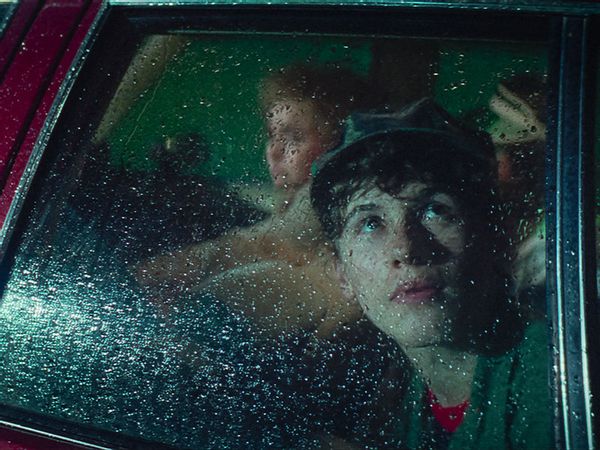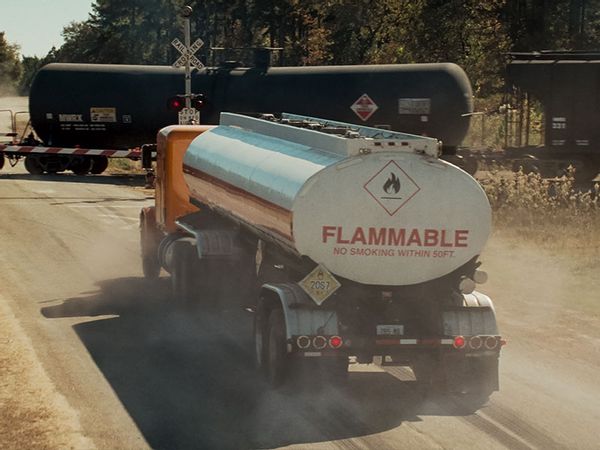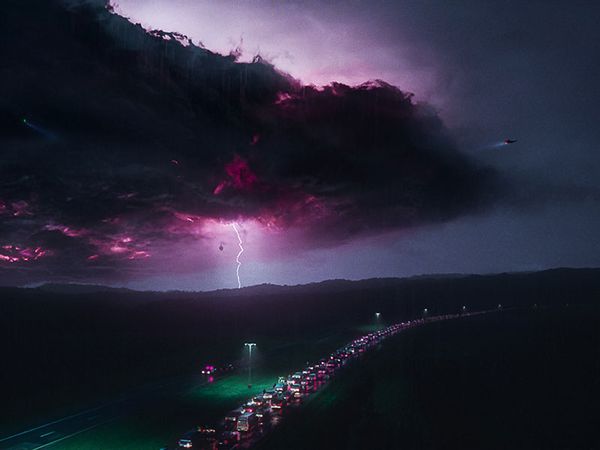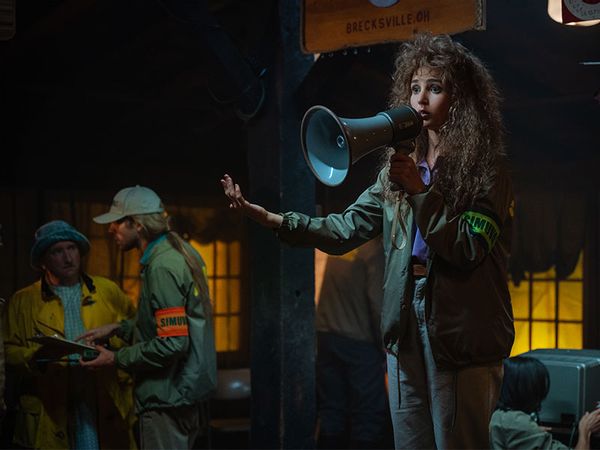The eerie parallels between Netflix’s “White Noise” and the Ohio train derailment disaster
I read “White Noise” in San Francisco, miles from home. I was living in the golden state for an all-too brief time, so far from rural Ohio where I was raised and where I would return to raise my child. In the sunshine, the beach a mere drive away, it seemed like a fine place to disappear into Don DeLillo’s 1985 novel about an Ohio college professor and his large family whose lives are upended by a toxic airborne event. I enjoyed the novel at the time. I don’t think I could read it again, not now, not in this world and not knowing what I do about my home’s long history of exploitation by industry and ecological disaster, a legacy that is ongoing.
In the book “White Noise,” winner of the National Book Award, Jack Gladney, his wife Babette and their many children from various marriages are forced to evacuate after a train derails near their pastoral Ohio home, causing an explosion which morphs into a dangerous, toxic cloud. Sound familiar?
Shortly after Noah Baumbach adapted and directed a film version of “White Noise,” now streaming on Netflix, starring his partner Greta Gerwig and Adam Driver, a freight train carrying hazardous chemicals derailed in rural Ohio. The story is still developing, and the environmental impact may not be fully known for years, but the tragedy bears an eerie resemblance to many elements of the film.
“How familiar this all seems to us,” Jack (Driver) says in the movie. Salon unpacks the similarities between “White Noise” and the ecological disaster in Ohio.
 Greta Gerwig as Babette and Sam Nivola as Heinrich in “White Noise.” (Netflix)
Greta Gerwig as Babette and Sam Nivola as Heinrich in “White Noise.” (Netflix)“White Noise” is set in Ohio, where Jack teaches at a college aptly known as the College-On-The-Hill. He and his family live in the small, picturesque town of Blacksmith, which is fictionalized. The movie was filmed almost entirely in Ohio, a prep school in Willoughby, Ohio, filling in for the College-On-The-Hill. Other classroom, lab and student center scenes were shot at the University of Akron, Baldwin Wallace University and Kent State University while the family home is a real house in the college town of Oberlin.
In real life, the train derailed in East Palestine, Ohio, a small town near the Pennsylvania border. Some residents of East Palestine worked as movie extras during the filming of “White Noise” in their home state.
 White Noise (Netflix)
White Noise (Netflix)“White Noise” is spilt into parts. The second part, titled “The Airborne Toxic Event” concerns what happens when a tanker truck carrying toxic, flammable material crashes into a passing train, due to the truck driver’s drunk driving. The train derails in the countryside. Cars smash into each other and the tanker is crushed, releasing a viscous substance. A fireball erupts. The rest of the film deals with the aftermath of the crash, in both large and small, personal ways.
In East Palestine, on Feb. 3, a Norfolk Southern train with 20 cars containing hazardous materials derailed and then caught on fire. As Ben Ratner, one of the East Palestine locals who appeared as extras in “White Noise,” told CNN, “The first half of the movie is all almost exactly what’s going on here.”
 White Noise (Netflix)
White Noise (Netflix)“There’s lots of smoke, and I don’t like the looks of it,” Jack’s teen son (Sam Nivola) says to him in the film, after the child has been studying the site of the train derailment through binoculars via the family’s roof. In the movie, an explosion from the derailment causes a toxic cloud that can be viewed for miles. It looks uncannily like the real scene in East Palestine of the dark, purple-blue cloud witnessed over farmland and pastures (a cloud that emerged after the so-called “controlled release” of the train cars’ chemicals). In the fictional film, the cloud later resembles a massive, purple-tinged storm cloud, which wouldn’t be out of place in “Ghostbusters.”
 Chloe Fineman as Simuvac Technician in “White Noise.” (Wilson Webb/Netflix)
Chloe Fineman as Simuvac Technician in “White Noise.” (Wilson Webb/Netflix)In “White Noise,” the family is first told to evacuate. Hours after the incident, believing the derailment and resulting explosion to be far enough away that it doesn’t pose a threat, the family sits down to dinner when air raid sirens go off. Then the fire chief hurries through the neighborhood in his car, blasting a message to evacuate all residents. Jack’s family flees in their battered station wagon. They don’t get far, jammed on the road with all the other escaping families. But then the emergency broadcast on the radio tells them a different message: to stay inside and shelter indoors. No one should be outside, the new messaging says. Or on the roads.
The people in East Palestine — and possibly, in the entire Ohio River Valley area – are dealing with similar mixed messages. Hundreds were forced to evacuate as Norfolk Southern burned carcinogens from the crash. After merely a few days, people were told it was safe to return. But the EPA continues to monitor the air, residents have described burning in their eyes and fish, livestock and pets have all been reported dead or sick.
Want a daily wrap-up of all the news and commentary Salon has to offer? Subscribe to our morning newsletter, Crash Course.
 White Noise (Wilson Webb/Netflix)
White Noise (Wilson Webb/Netflix)In the last part of “White Noise,” the main characters deal with their fear of death in various ways — though, as a seminal postmodernist story, perhaps “deal” is too strong a word. Little is truly resolved or seems certain.
So too East Palestine, Ohio, and multiple states bordering the Ohio River, may be facing an uncertain future. The derailed and burned cars contained dangerous chemicals including butyl acrylate, ethylhexyl acrylate, isobutylene, and especially concerning: vinyl chloride, which NPR describes as “a carcinogen that becomes a gas at room temperature.” It breaks down in the sun, can cause headaches and dizziness, but it has severe long-term risks as well. NPR writes, “People who breathe the chemical over many years may also experience liver damage,” and due to its “tiny atoms,” residents can’t just clean it off.
GoFundMe pages have been set up for East Palestine, with other charities for people and animals impacted by the disaster accepting donations as well.
Read more
about environmental disaster

